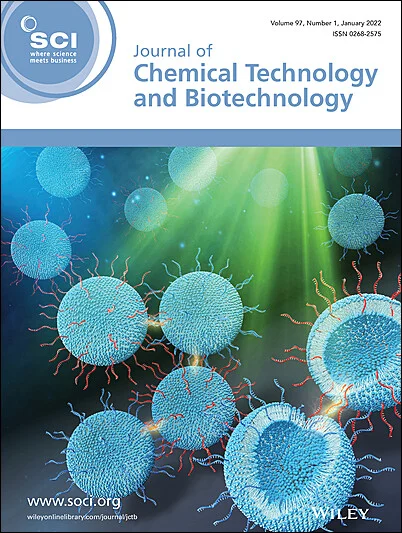Production and characterization of a thermostable endo-β-1,3(4)-glucanase for the combined enzymatic degradation of chitin-glucan to produce prebiotic oligosaccharides from mushroom waste
Abstract
BACKGROUND
Growing global demand for mushrooms means an increased production of solid mushroom waste (SMW), necessitating novel approaches for waste valorization. Waste stalks and misshapen mushrooms are rich in chitin-glucan polymer – a promising source of prebiotics. Tter16 (EC 3.2.1.6) from Thielavia terrestris was cloned, recombinantly expressed in Pichia pastoris, and biochemically characterized. An enzyme cocktail preparation containing Tter16, two other endo-β-1,3(4)-glucanases (Csph16A and Csph16A-ΔC) and one endo-β-1,6-glucanase (Tvir30) (EC 3.2.1.75), was used to degrade the glucan fraction of fungal chitin-glucan with the aim of valorizing bioactive polymers within commercial mushroom waste.
RESULTS
Tter16 was optimally active at pH 5.0, 50 °C, and hyperthermostable at 50 °C with a D-value of 33 days. The Tm of Tter16 was determined to be 67.77 °C and the substrate specificity analysis revealed a preference for mixed-linkage β-glucans. Tter16 was found to possess one of the highest turnover numbers recorded for noncellulolytic fungal glucanases, with a value of 1221 s−1. The enzyme cocktail yielded oligosaccharides including a β-1,6-linked disaccharide and β-1,3-linked oligosaccharides DP 2–5, while minimizing the production of glucose at >90 min of hydrolysis of chitin-glucan. A small-scale chitin-glucan hydrolysis study resulted in a 242.5 mg yield of soluble sugars per g of substrate (24.3% yield) after 90 min of hydrolysis. These oligosaccharides were found to support the growth of the probiotic Lacticaseibacillus rhamnosus (formerly Lactobacillus rhamnosus) in vitro.
CONCLUSION
The biochemical properties of Tter16 are well-suited for the intended application of mushroom waste valorization. Enzymatic hydrolysis of chitin-glucan released β-glucooligosaccharides displaying prebiotic potential. To the best of our knowledge, this is the first account of the cooperative enzymatic degradation of chitin-glucan with the aim of liberating prebiotic β-glucooligosaccharides from solid mushroom waste and their subsequent in vitro application testing. © 2025 The Author(s). Journal of Chemical Technology and Biotechnology published by John Wiley & Sons Ltd on behalf of Society of Chemical Industry (SCI).





 求助内容:
求助内容: 应助结果提醒方式:
应助结果提醒方式:


